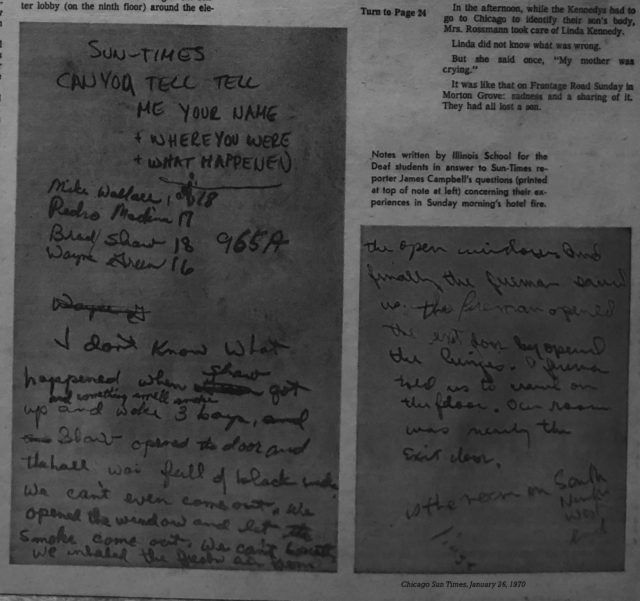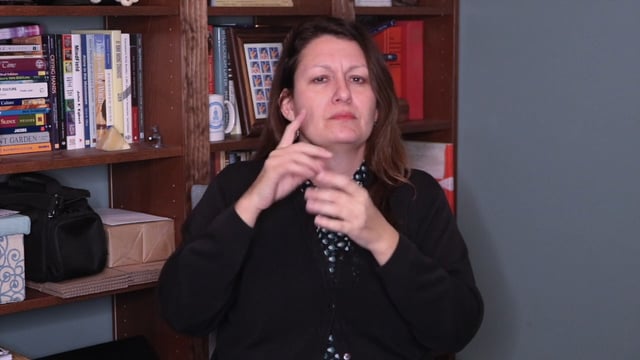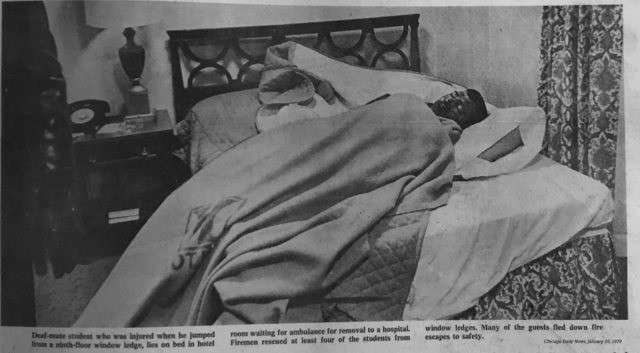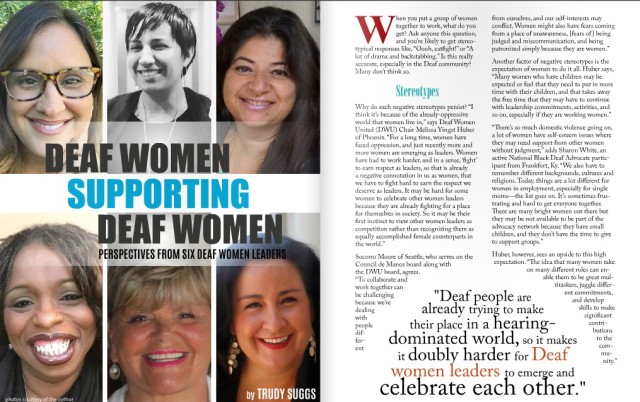This article originally appeared at www.deafprofessional.net.
The cover of Deaf in Delhi features a stunningly handsome, dark man, complete with fashionable scarf around neck. I couldn’t help but marvel at the black and white picture, which is reminiscent of a different era, yet resembles a modern-day Banana Republic advertisement.
Deaf in Delhi details growing up deaf in India during the 1940s and 1950s. Author Madan Vasishta – who is the 21-year-old man on the cover, now in his 60s – says he wrote the book because he knows of many deaf people in India who have very little hope for their futures. “Growing up, I never met another deaf person until I was well into my 20s,” he says over coffee and rolls at Washington, D.C.’s Union Station. That is a concept I find difficult to grasp, given the opportunities I have had as a born-deaf American.
I had corresponded with Vasishta for many years, starting with when he wrote stories for a publication I edited. I had pictured him to be a tall man, full of confidence and arrogance. We finally met at Union Station in the summer of 2006. What I wasn’t prepared for was that I was taller than Madan; the power of his words makes him larger than life. He wasn’t at all arrogant; rather, he was kind-hearted, energetic and easy to chat with.
“Over the years, whenever I told stories about my growing up in India to friends, they would say, you need to write all this down,” Vasishta says. “They’d say that these stories would make a good book. I laughed these suggestions off for 30 years. However, after my retirement, I decided to take the pen, or as I say, hit the keyboard.” His stories have evolved into a witty and heart-warming memoir of a life shaped by the experience of becoming deaf after a two-week typhoid fever and mumps at the age of 11. “It amuses me to look back and think about how many cures I had to experience before we all finally accepted I wasn’t going to regain my hearing,” he recalls with a twinkle in his eye. He adds that he grew up in an era where poverty existed among most people in India, who relied upon family ties, tradition and faith for strength.
This 216-page book is full of charming anecdotes, quirky memories and a tongue-in-cheek style. Ideal for Deaf culture and/or Deaf studies courses and for leisurely reading, this easy-to-read book is a fascinating look into deaf life in India. After becoming deaf, Vasishta tells of his frustration at not being able to attend school, and his refusal to accept the fate of being a cattle herder. Determined to educate himself, he moved to Delhi.
“The train hurtled in. The second-class bogies were not only full but literally bursting at the seams with people,” he writes. “I managed to jump onto the nearest door and hung to the door handle while standing on the first step. As the train moved, I managed to get my two feet on the main floor of the bogey. There I stood for seven hours as the train sped by fields where farmers were sowing corn. I smiled. I was done with farming! A new life was waiting for me…”
Vasishta attended photography school and met a cast of deaf characters who eventually became his life-changing connection to the deaf community. He also remembers with pride how, after he left his photography job, he beat out over 80 hearing people for a much-coveted government job.
My favorite parts in the book, by far, were the cultural misunderstandings upon his arrival at Gallaudet University. He writes, “As time went on, I learned more American English. Americans do not sell garages or yards when they advertise garage or yard sales. An African friend went to a professional photographer for a new photograph of himself since his counselor had recommended that he ‘present his best picture’ at an upcoming job interview. I had already learned that Americans played ‘football” with their hands (and no foul was called) and rarely touched it with a foot… When a boy and a girl take their car to “park” behind a building, they usually have some other purpose in mind. The list is endless.”
Vasishta’s amusing honesty emerges often. “In India, you can ask an acquaintance how he paid for a certain item, what his salary is, and whether he is happy with his wife. Such questions reflect your concern for the individual,” he writes. “In America, my polite inquiries about people’s personal affairs generated shock and annoyance. The nicest response to my questions was ‘none of your business.’ Sometimes, people would also interject some other words before the word business. I acquired a pretty good vocabulary of four-letter words while checking on my new friends’ general welfare.”
Despite cultural and emotional adjustments, Vasishta achieved milestones beyond even any American’s wildest dreams. It is remarkable to think of how far he has come – especially during an era when today’s technology didn’t exist. He earned his doctorate, served as the superintendent of the New Mexico School for the Deaf and the North Carolina School for the Deaf, and is currently an associate professor in the administration and supervision graduate program at Gallaudet University. He authored an Indian Sign Language dictionary, had two children with his wife of 39 years, who he met through an arranged marriage (also detailed in the book). He is also working on a historical fiction novel book based on Gallaudet during the 1880s, and writing a sequel to his memoir.
Deaf in Delhi is worth the buy and read. Vasishta’s story is a story of self-propelled determination and achievement, one that Americans can learn from.
Deaf in Delhi is published by Gallaudet University Press, and is available for $29.95.
Copyrighted material. This article can not be copied, reproduced, or redistributed without the written consent of the author.




